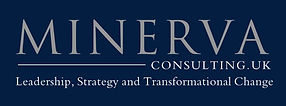Leaders or Leadership - Interchangeable Terms? What Do We Mean?
- Jeremy Tozer

- Apr 15, 2020
- 3 min read
The terms ‘leader’ and ‘leadership’ are often used interchangeably, and I suggest that this hinders development of both in the real world. If definitions are unclear, effectiveness in developing that idea and turning it into reality may be inhibited through incoherent, disjointed and/or potentially conflicting concepts, ‘messages’ and activity.
Logically, your definitions will inform 'mutually reinforcing and supporting policies, systems and processes' in all sorts of policy and process areas —recruitment and selection, learning and development, performance management, reward and recognition, organization design and development and so on. The rigour and 'conceptual coherence' of the intellectual foundations of the design and ways of working of any enterprise, influence culture, capability and the boundaries of performance.

These are my working definitions which I've evolved over 20 years of consulting and which seem to hold up pretty well; they certainly provoke ‘clarifying discussions’ in organizations which are considering their approach to leadership assessment and development and organization design. The reason that the two definitions of leader and leadership that I use are differentiated, is that this allows for the concept of ‘shared leadership’, but recognizes that someone is responsible for a team and its output.
Leader: a person accountable for achieving organizational objectives through the work of others by creating the conditions in which people may be successful, and for building and maintaining the team that he or she is a member of (Tozer, 2012). The key point is that a leader has accountability for people, their work, and their outputs; and this definition supports distributed leaders in a team of teams.
As a leader you are a member of the team, but somewhat removed from it. This has to be the case if you are to view the team in the context of the ‘bigger picture’, build the identity of the collective team entity, take the hard decisions that inevitably arise as well as take full responsibility —for the deployment, tasking, performance, development, administration and welfare of the team and the individuals within it.
To meet that accountability a leader needs to have certain authorities aligned to their accountability; not because they need to 'wield authority and give orders' but because it makes their role both legitimate and ultimately tenable. 'All the accountability but no authority’ is one of the biggest sources of stress for leaders in organizations (and the biggest single cause of their stress related pay-outs according to one insurance company director I spoke with). Yet it may be prevented with effective organization design and definition of role relationships.
And to be effective, leaders have to really want accountability both for people (in the fullest sense of understanding them as a team and as individuals in order to harness their best efforts —appreciating their needs, expertise, aspirations, motivators and so on), and for their individual and collective outputs. When the team succeeds, the leader succeeds.
Leadership: the ability to emotionally engage people in and align their activity to a common purpose, together with the character that inspires confidence and trust. Leadership is a process of influence and is relational, contextual, and non-hierarchical (but well-designed organization structure has a purpose). The 'leadership situation' does not arise unless one or more people recognise the requirement to be led; leadership only exists when followership is evident. Leadership is a mix of skills and knowledge, applied with adaptable, appropriate yet authentic and emotionally intelligent behaviour, and the ‘right’ level of intellectual horsepower for the level of work complexity faced.
We have evolved Adair’s work to define four ‘areas of need’ (stakeholder context, task, team and individual) and six key ‘lines of leadership activity’ to produce 24 distinct leadership ‘functions’ which together deliver the conditions for success that any team or organization requires. This is the leadership job description that few organizations articulate in detail, just being aware of it improves performance.
Given the extent of this ‘leadership job description’, the need to engage people, the limitations of time, and importantly the fact that few leaders (if any) excel in all 24 functions of ‘leadership’, ‘leadership’ (but not responsibility for the team) must be a shared endeavour. Effective leaders harness the complementary differences of colleagues to build a culture of shared leadership, suited to the VUCA world.
So this definition permits ‘shared leadership’ —anyone can demonstrate leadership if they choose to, even to momentarily change the direction of a conversation. But 'leaders' (as I have defined the term) cannot abdicate all the leadership to others if they are to maintain any personal credibility!


Comments